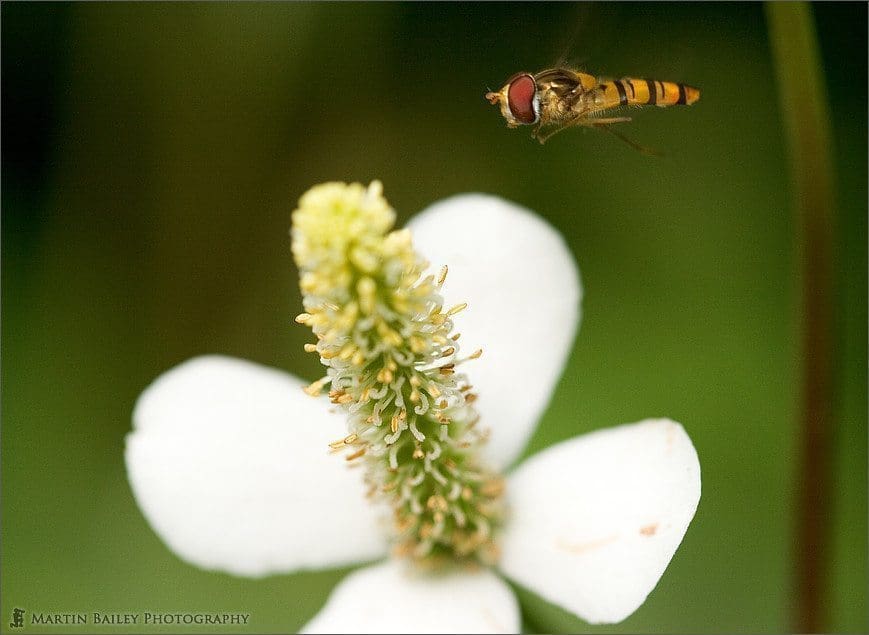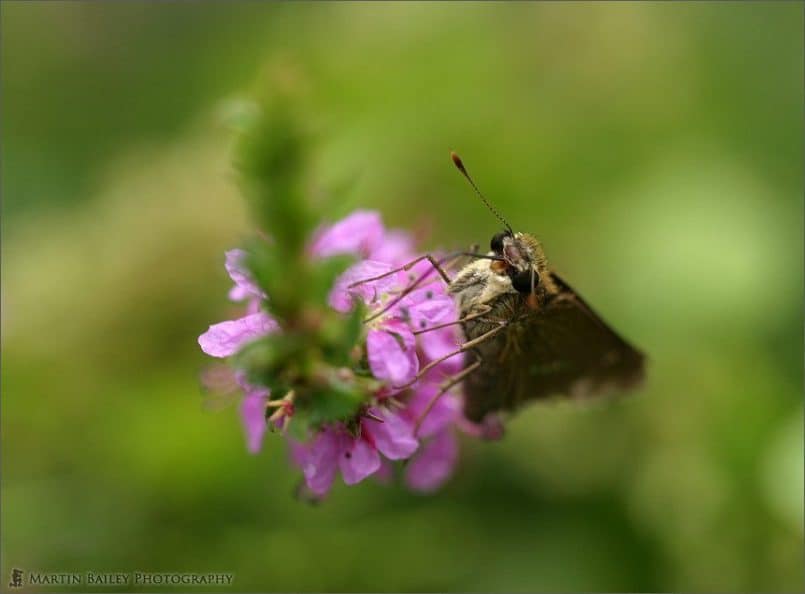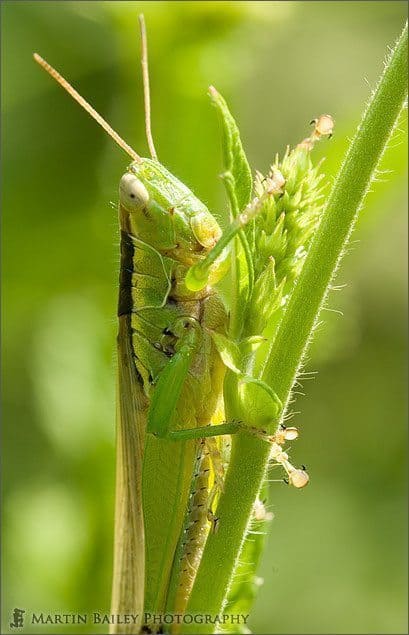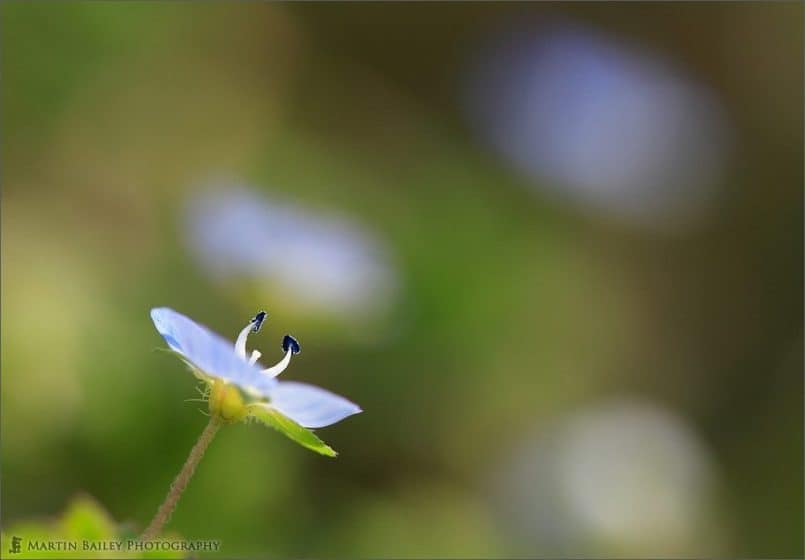Macro Photography could never be covered totally in just one Podcast episode. I’m currently planning two episodes of which this is the first with a second to follow next week, and still I’m really only going to be able to scratch the surface. The reasons for this are that I’ll probably bore the listeners that have no interest in macro photography silly harping on about it for weeks on end, and the other, and more important reason is that macro-photography is such a complex subject that I’m really probably just scratching the surface of it myself in many respects. I feel confident enough at this point in time to talk to you about what I know, and I’ll number these first episodes parts I and II. As I gain experience and learn more about this complex subject though I will almost certainly be following it up at some point in the future with part III or more.
I’ve been shooting with a macro lens since December 2003, when I picked up a Canon EF 100mm F2.8 Macro USM lens. My other macro lens that I picked up a few months ago is the Canon MP-E 65mm F2.8 1-5x lens. This lens is quite specialized in that it allows you to shoot at up to five times greater than 1:1 or life size and it has no focusing mechanism. I’ll go into more detail on this lens and its use next week. To date though, the majority of my Macro work has been done with the 100mm F2.8 lens. This is an incredibly sharp lens for both macro work and is also often discussed as a great portrait lens too. This can often help to tip the scales when deciding whether or not to buy the lens as its use would not be totally limited to macro work.
Firstly, I’d like to explain why I got into Macro photography. Well, the initial reason was very simple. I did not have a car as it is expensive and to a certain degree no necessary to own a car here in Tokyo, so in addition to the odd excursion to natural places of beauty, I was fulfilling much of my desire to make photographs in parks accessible by train around Tokyo. When I went to these parks I was shooting flowers and bugs with standard lenses, such as the 28-135mm F3.5-5.6 IS lens. The closest focusing distance of this lens though is 50cms and this gives a maximum magnification of 0.19. Around 0.2, or basically around one fifth life-size is pretty normal for standard zoom lenses.
So, I should also explain what is meant by life-size? A piece of 35mm film is 36x24mm. Life size means that if I was to photograph an object say 1cm wide, it would appear on the film at exactly 1cm if I measured it. Therefore, if for example I shot something exactly 36mm wide it would fill the frame and the film exactly if shot at the minimum focusing distance. With a lens that has a maximum magnification of 0.2 however the 1cm object would be just 2mm on the film and the 36mm object would occupy just 7.2 millimeters on the film.
There are other focal length macro lenses available from Canon such as the 50mm F2.5 compact macro lens, but this lens alone only gives you 0.5 magnification. To achieve life-size images with this lens you need the dedicated life-size converter. There is also a 180mm F3.5 L macro lens from canon. All of these focal lengths create an image that is 1:1 or life-size. The difference is the minimum focusing distance or working distance. For the 180mm, 48cm is the closest you can focus and this will produce a life-size image. The 100mm lens will focus as close as 31cm, and the 50mm as close as 23cm. So as long as you have the life-size converter on the 50mm all of these lenses will produce a 1:1 life-size image.
Nikon have a similar range and there are also fine macro lenses available from third party manufacturers. I suggest if you don’t already own a macro lens but are thinking of buying one, check out the forum at martinbaileyphotography.com. There are a number of threads discussing the various lenses available. Also consider how close or far you need to be from your subject, and if possible actually go to a store and try the lenses on your camera to see just how close you can get. Maybe take a few shots of a coin or something that is a constant size to give you an idea of how large it can be reproduced on film.
I personally find the 100mm to be perfect for most work, and although I’d like the 180mm macro lens to give me more working distance, I’ve not as yet been able to justify the cost or additional weight over my 100mm lens.
The fourth macro lens from Canon, the MP-E 65mm F2.8 1-5x lens actually at starts at life-size and magnifies to a maximum of 5 times that. This lens has minimum focusing distances from 24 to 31cms, depending on the magnification, but again, this is quite a specialist lens so we’ll cover it in more detail later on.
Note that when measuring a lenses minimum focusing distance or working distance you measure from the film or sensor, not the end of the lens. When you consider that 100mm lens is almost 12cms long to start with, and there’s probably about 3cms from the back of the lens to the film, we’re probably talking 15cms to subtract from the working distance to get the distance from the front of the lens to the subject, which would leave 16cms. If you consider the length of the hood for this lens too, that only leaves you about 7cms to the subject. If you are shooting insects with good eye sight, like jumping spiders for example, this distance can make them skittish and you may well loose your shot. If you intend to shoot a lot of insects and not just flowers that don’t tend to run away when you get too close, the 180mm might be worth considering.
Macro lenses do of course not have to be used at 1:1. You can move away from the subject to make the same artistic decisions on the composition of your shots as you would any other type of photography. Another thing to bear in mind is that the closer you get to your subject and the longer the focal length of your camera, the shallower the depth-of-field gets. This allows you to throw the background out of focus very easily, but with macro photography obtaining the depth-of-field you require can sometime be difficult, even at very small apertures. I personally though prefer images with quite a shallow depth of field more often than not to give the image a nice dreamy effect.
Let’s look at a shot that I made about two years ago, which is shot number 453. For reasons that will become obvious when you view the shot I called this Raggedy Moth, as this particular species of moth looks pretty scruffy with its brown colouring and hair. I have the real name of the moth on my site but I’m not going to embarrass myself by trying to pronounce it here. Although I’d shot lots of flowers in the nine months or so since I bought the 100mm macro lens, this was probably the first shot that I got close to what I was trying to do. I was hand holding at 1/80th of a second shutter speed and the aperture set to F4. At this distance, which I’d say was probably around 15cms from the front of my lens hood, so F4 did not give me much depth-of-field, but enough to get the head, most of the moths tentacles, and its front legs in focus. The flower on which the moth is perches is also in focus for a little way, but the top and bottom are way out of focus, along with the background. I was pleased with this shot just because it too because the moth was not bulls-eyed. I managed to move it slightly of center and the flower in the mirror image position. It’s not a great shot, but as I say it was probably my first successful insect shot.
When working at close quarters like this, keeping the camera still is much more of a task that one might think. I’ve mentioned the rule of having the focal length as the slowest shutter speed a number of times, and indeed with the last image I was using quite a slow shutter speed looking back. When trying to shoot something that is moving though, you really do need a faster shutter speed. Even then shooting in bursts helps to get one good out of a number of possibly blurred or out of focus shots. In the spring of 2005 I shot image number 641 of a wasp in flight. This was probably the first time I managed to catch something in flight at such a close distance. Again I was shooting hand-held, and I’d selected an ISO of 400 for a faster shutter speed of 1/250th of a second, again with an aperture of F4. This wasp was although in flight, was actually hovering for a second or so when I shot this, then it flitted around again before settling on the Chameleon Plant below. I don’t have a clue why that flower is called a Chameleon Plant. It just is. You can see again from the relatively small area of the flower that is in focus how shallow the depth of field is here, so I hope you can appreciate how careful you need to be with both the focus and keeping the camera steady when hand holding for this kind of shot.
People often think that moving the camera from side to side or up and down are the only problems when discussing camera shake. The truth is though when shooting macro, the camera moving backwards and forwards is also a problem as you can quickly move the depth-of-field away from the subject ruining a good chance. As I say, if you are going to hand hold for macro work, shoot in bursts to increase your chances of getting something useable and try to get a shutter speed of twice to three times your focal length if possible. One of the main reasons for failure in my first year of macro photography was putting too much faith in the focal length to shutter speed rule. Since failing so many times I now try to double or triple my shutter speed for hand holding, or use a dedicated macro flash, which we’ll discuss later.
The other obvious thing to do is support your camera on a tripod, although this is not always possible when chasing flying insects such as bees or butterflies around. In image 696 I was using a tripod to shoot this incredibly patient rice grasshopper. I wrote in the comments for this image that the grasshopper seemed to be whispering to me. I still feel that way, but looking back at the shot now I do also feel that he was being incredibly patient. I’m personifying my subjects again, but it feels like he’s thinking “how much longer do you need, can I go yet”. Indeed, grasshoppers can be very patient, but if you get too close, they do what they do best and hop away. The light was very harsh for this shot, and although I have some strong highlights on the far side of the grasshopper, including it’s almost translucent legs, I’m quite happy with the results. If I had realized the shot was going to be this contrasty I might have tried throwing some light in either with my flash or a reflector that I would definitely have been carrying. This is definitely something to bear in mind in future.
This was a relatively large insect and I was shooting slightly diagonally from above, so I selected an aperture of F8 and as I was using a tripod, the shutter speed was 1/20th of a second at ISO 100. There was absolutely no wind on this day. If there had been, I would have needed to increase the ISO and set a much higher shutter speed to freeze this subject as the stalk onto which it is clinging would have been swaying back and forth enough to blur a 20th of a second exposure. Things to bear in mind when buying a tripod that’s you’ll use for macro work are finding something that can not only high enough so as not to bend your back for extended periods while spending time focusing etc., but also one that goes low enough for you to get down the height of some of the little critters that you will almost undoubtedly take an interest in once you have opened your eyes, and your photography up to the microcosm you can now explore. It helps is your legs not only collapse to a very short length but also if they can be opened up in a few stages splaying the legs out further than normal. To do this without the center pole touching the floor you’ll probably need a model with a removable center pole. This is actually pretty much essential for macro work as we’ll see in the final shot for this introduction to macro photography, image number 955.
I actually showed you this image in Podcast episode 32 when I discussed tripods. Many species of flowers grow very close to ground level, so to make an image like this, where we’re actually looking up at the flower head slightly, I had my camera hanging upside down, with the flash shoe about 2 centimeters from the ground. I had my tripod legs opened out to 45 degrees, and the center pole inserted upside down into the tripod so that the camera hung upside down. The ability to do this was something I anticipated and considered when I bought my tripod. All of these things should be kept in mind when deciding what to buy if you are currently considering macro photography and don’t yet have your tripod.
Finally today, one more tip based on this image is that there is an easy and relatively cheap way to decrease the working distance and increase magnification to more than life size is to use an extension tube that goes between your lens and camera body. The 100mm lens with a 25mm extension tube is and especially nice combination. For more information on extension tubes, you can listen to episode 24 of this Podcast if you haven’t already. This current shot was made again with the 100mm F2.8 macro lens, but also using the 25mm extension tube and the aperture set to F4 for 160th of a second. Even using the tripod I’d selected ISO 200 for a faster shutter speed as there was a slight breeze.
With the extension tube I was able to get even closer to this tiny blue flower called a Common Field Speedwell and you can also see how that has effected the depth-of-field, which is now so shallow that only the stamen and a tiny portion of the flowers petal, a leaf and the stem is in focus. One thing to note is that although extension tubes decrease the minimum focusing distance they also decrease the maximum focusing distance dramatically too, so you could not simply raise the camera from shooting a flower or a bug at 15cms to shoot a UFO about to land in a nearby field.
So, as I’ve said, this week we’ve really just scratched the surface of macro-photography, touching on some terminology, working distance and shooting single subjects and some precautions we need to take when doing so. Next week we’ll talk about paralleling your composition when you have multiple subjects that you want in focus, and we’ll also discuss some more advanced macro techniques such as using dedicated macro flash, using a second flash to illuminate the background, and going greater than life size and the difficulties that imposes on us.
Please remember that this is the last week for entries to the Rainy Days assignment, which closes on June 25th. If you haven’t yet posted your entry, please take a look at the details in the Assignment Forum, and if you didn’t listen to the original Podcast on this assignment but would like to give it a try, please go back to Episode 37 for details.
Thank you very much for listening today and I hope this has been interesting and of some use. Listen out next week for the second part, but until then, have a great week, whatever you’re up to. Bye bye.
Show Notes
Music from Music Alley: www.musicalley.com/
Subscribe in iTunes for Enhanced Podcasts delivered automatically to your computer.
Download this Podcast in MP3 format (Audio Only).
Download this Podcast in Enhanced Podcast M4A format. This requires Apple iTunes or Quicktime to view/listen.







0 Comments